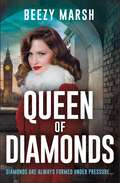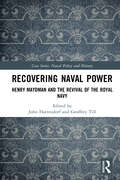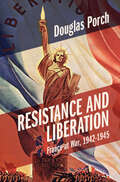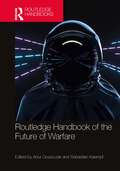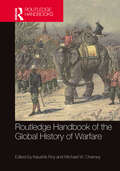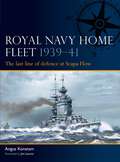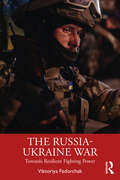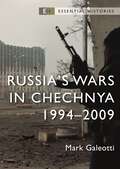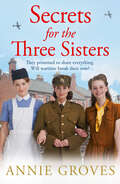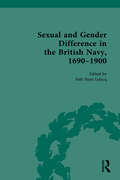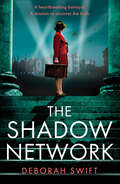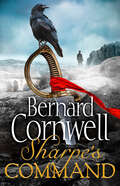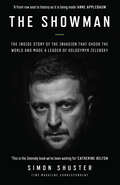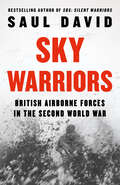- Table View
- List View
Queen of Diamonds: An exciting and gripping new crime saga series (Queen of Thieves #3)
by Beezy MarshLondon, 1922. Orphan girl Alice dreams there's more to life than toiling long hours in Pink's jam factory. Inspired by stories about the legendary Queen of Thieves, Mary Carr, who terrorised the streets of Victorian London, Alice decides to set up her own gang: The Forty Thieves.Sly seamstress Kate Felix from Whitechapel persuades Alice they'd make the perfect team and before long, the pair are making headlines in the glitzy world of 1920s Soho with their criminal sprees.A life of crime means they soon make some powerful enemies, and Alice must sacrifice more than she ever thought if she is to be crowned Queen of Diamonds.But the toughest and most beautiful diamonds are formed under pressure.From squalid slums and the grim confines of Holloway Prison to the glittering nightclubs of London in the roaring twenties, Queen of Diamonds is a fast-paced, gritty story of love, loss and loyalty to the gang.The third in a thrilling new crime saga series about a real-life gang girl from Sunday Times bestselling author Beezy Marsh, Queen of Diamonds is perfect for fans of Sam Michaels, Martina Cole and Jessie Keane.
Recovering Naval Power: Henry Maydman and the Revival of the Royal Navy (Cass Series: Naval Policy and History)
by John B. Hattendorf Geoffrey TillThis book offers a new edition of Henry Maydman’s work Naval Speculations with a detailed commentary by two leading experts on its importance to the naval issues of the 21st century. Written at a revolutionary and troubling time, Maydman’s 1691 book offers an analysis of the state of the Royal Navy at the time, together with a set of recommendations for its improvement. It not only tells us a good deal about the Royal Navy of the time but also provides a general theory of why navies decline and what can be done to rejuvenate them. Recovering Naval Power shows that the issues he identifies have applied to every navy in every period. We are now seeing the dramatic rejuvenation of the Chinese Navy and the reactions to it of the US and other navies, together with a new rise in naval tensions in the Euro-Atlantic. Despite the obvious political, economic and technological differences between Maydman’s day and ours, this work shows that his recommendations could hardly be more relevant in today’s circumstances. Alongside the modified text of Naval Speculations, this book includes a preface and two chapters addressing, first, the Royal Navy of Maydman's time and his role in it and, second, the relevance of what Maydman said for the navies of the 21st century. The book concludes with some overall comments about Maydman and the recovery of naval power and recommendations for further reading. This book will be of much interest to students of naval history, maritime power, strategic studies, and International Relations in general.
Recovering Naval Power: Henry Maydman and the Revival of the Royal Navy (Cass Series: Naval Policy and History)
by John Hattendorf Geoffrey TillThis book offers a new edition of Henry Maydman’s work Naval Speculations with a detailed commentary by two leading experts on its importance to the naval issues of the 21st century. Written at a revolutionary and troubling time, Maydman’s 1691 book offers an analysis of the state of the Royal Navy at the time, together with a set of recommendations for its improvement. It not only tells us a good deal about the Royal Navy of the time but also provides a general theory of why navies decline and what can be done to rejuvenate them. Recovering Naval Power shows that the issues he identifies have applied to every navy in every period. We are now seeing the dramatic rejuvenation of the Chinese Navy and the reactions to it of the US and other navies, together with a new rise in naval tensions in the Euro-Atlantic. Despite the obvious political, economic and technological differences between Maydman’s day and ours, this work shows that his recommendations could hardly be more relevant in today’s circumstances. Alongside the modified text of Naval Speculations, this book includes a preface and two chapters addressing, first, the Royal Navy of Maydman's time and his role in it and, second, the relevance of what Maydman said for the navies of the 21st century. The book concludes with some overall comments about Maydman and the recovery of naval power and recommendations for further reading. This book will be of much interest to students of naval history, maritime power, strategic studies, and International Relations in general.
Regency Rebels: The Soldier's Dark Secret (comrades In Arms) / The Soldier's Rebel Lover (Mills And Boon M&b Ser.)
by Marguerite KayeHidden truths
Resistance and Liberation: France at War, 1942-1945 (Armies of the Second World War)
by null Douglas PorchIn Resistance and Liberation, Douglas Porch continues his epic history of France at war. Emerging from the debâcle of 1940, France faced the quandary of how to rebuild military power, protect the empire, and resuscitate its global influence. While Charles de Gaulle rejected the armistice and launched his offshore crusade to reclaim French honor within the Allied camp, defeatists at Vichy embraced cooperation with the victorious Axis. The book charts the emerging dynamics of la France libre and the Alliance, Vichy collaboration, and the swelling resistance to the Axis occupation. From the campaigns in Tunisia and Italy to Liberation, Douglas Porch traces how de Gaulle sought to forge a French army and prevent civil war. He captures the experiences of ordinary French men and women caught up in war and defeat, the choices they made, the trials they endured, and how this has shaped France's memory of those traumatic years.
Routledge Handbook of the Future of Warfare
by Artur Gruszczak Sebastian KaempfThis handbook provides a comprehensive, problem-driven and dynamic overview of the future of warfare. The volatilities and uncertainties of the global security environment raise timely and important questions about the future of humanity’s oldest occupation: war. This volume addresses these questions through a collection of cutting-edge contributions by leading scholars in the field. Its overall focus is prognostic rather than futuristic, highlighting discernible trends, key developments and themes without downplaying the lessons from the past. By making the past meet the present in order to envision the future, the handbook offers a diversified outlook on the future of warfare, which will be indispensable for researchers, students and military practitioners alike. The volume is divided into six thematic sections. Section I draws out general trends in the phenomenon of war and sketches the most significant developments, from the past to the present and into the future. Section II looks at the areas and domains which actively shape the future of warfare. Section III engages with the main theories and conceptions of warfare, capturing those attributes of contemporary conflicts which will most likely persist and determine the dynamics and directions of their transformations. The fourth section addresses differentiation and complexity in the domain of warfare, pointing to those factors which will exert a strong impact on the structure and properties of that domain. Section V focuses on technology as the principal trigger of changes and alterations in the essence of warfare. The final section draws on the general trends identified in Section I and sheds light on how those trends have manifested in specific local contexts. This section zooms in on particular geographies which are seen and anticipated as hotbeds where future warfare will most likely assume its shape and reveal its true colours. This book will be of great interest to students of strategic studies, defence studies, war and technology, and International Relations.
Routledge Handbook of the Future of Warfare
by Artur Gruszczak Sebastian KaempfThis handbook provides a comprehensive, problem-driven and dynamic overview of the future of warfare. The volatilities and uncertainties of the global security environment raise timely and important questions about the future of humanity’s oldest occupation: war. This volume addresses these questions through a collection of cutting-edge contributions by leading scholars in the field. Its overall focus is prognostic rather than futuristic, highlighting discernible trends, key developments and themes without downplaying the lessons from the past. By making the past meet the present in order to envision the future, the handbook offers a diversified outlook on the future of warfare, which will be indispensable for researchers, students and military practitioners alike. The volume is divided into six thematic sections. Section I draws out general trends in the phenomenon of war and sketches the most significant developments, from the past to the present and into the future. Section II looks at the areas and domains which actively shape the future of warfare. Section III engages with the main theories and conceptions of warfare, capturing those attributes of contemporary conflicts which will most likely persist and determine the dynamics and directions of their transformations. The fourth section addresses differentiation and complexity in the domain of warfare, pointing to those factors which will exert a strong impact on the structure and properties of that domain. Section V focuses on technology as the principal trigger of changes and alterations in the essence of warfare. The final section draws on the general trends identified in Section I and sheds light on how those trends have manifested in specific local contexts. This section zooms in on particular geographies which are seen and anticipated as hotbeds where future warfare will most likely assume its shape and reveal its true colours. This book will be of great interest to students of strategic studies, defence studies, war and technology, and International Relations.
Routledge Handbook of the Global History of Warfare
This handbook examines key aspects of the development of the global history of warfare and the changing patterns of warfare over time. Although scholarship has long eschewed a chronological narrative of the evolution of warfare that privileges the Western experience, global histories of warfare have had difficulty avoiding an overemphasis on the West. The present volume is a collection of themes rather than a history per se; it provides important perspectives on the emergence of warfare as a global historical experience from the ancient past to the present day. Drawing together numerous experts, it tells a broader, more inclusive story of the global, human experience with wars and warfare. The 35 cahtpers are organised in eight thematic parts: Part I: Origins of Warfare Part II: Polities and Armed Forces in the Pre-Modern Era Part III: Steppe Nomads of Eurasia Part IV: Naval Warfare and Piracy in the Pre-Industrial World Part V: The Impact of Gunpowder Part VI: Transition from Industrial to Total War Part VII: Wars of Decolonisation and Cold War Part VIII: Postmodern/New Wars These Parts offer an overview of the global experience of warfare to help readers understand how the wars and the militaries we see today have been shaped by historical developments across the globe. This handbook will be of great interest to students of military history, naval history, strategic studies and world history in general.
Routledge Handbook of the Global History of Warfare
by Kaushik Roy Michael W. CharneyThis handbook examines key aspects of the development of the global history of warfare and the changing patterns of warfare over time. Although scholarship has long eschewed a chronological narrative of the evolution of warfare that privileges the Western experience, global histories of warfare have had difficulty avoiding an overemphasis on the West. The present volume is a collection of themes rather than a history per se; it provides important perspectives on the emergence of warfare as a global historical experience from the ancient past to the present day. Drawing together numerous experts, it tells a broader, more inclusive story of the global, human experience with wars and warfare. The 35 cahtpers are organised in eight thematic parts: Part I: Origins of Warfare Part II: Polities and Armed Forces in the Pre-Modern Era Part III: Steppe Nomads of Eurasia Part IV: Naval Warfare and Piracy in the Pre-Industrial World Part V: The Impact of Gunpowder Part VI: Transition from Industrial to Total War Part VII: Wars of Decolonisation and Cold War Part VIII: Postmodern/New Wars These Parts offer an overview of the global experience of warfare to help readers understand how the wars and the militaries we see today have been shaped by historical developments across the globe. This handbook will be of great interest to students of military history, naval history, strategic studies and world history in general.
The Royal Librarian
by Daisy WoodA royal palace. A closed book. A betrayal that will echo through generations…
Royal Navy Home Fleet 1939–41: The last line of defence at Scapa Flow (Fleet #5)
by Angus KonstamPacked with illustrations, this is a new history and analysis of how the Royal Navy's most important fleet operated and fought the German Navy in the crucial first years of World War II.Throughout its history, the Royal Navy's most powerful fleet has been the one guarding home waters. In this book, naval historian Angus Konstam explores the fighting power, the roles, and the battles of the Home Fleet, in the crucial first years of World War II when it was Britain's most powerful fighting force, anchored in the northern bastion of Scapa Flow. He explains the complex responsibilities of the fleet, charged simultaneously with preventing the powerful German Navy from breaking out into the Atlantic; preparing to challenge any cross-Channel invasion force; and attacking German naval operations in the North Sea. Home Fleet actions included the loss of HMS Hood, the sinking of the Bismarck and countering the invasion of Norway, Germany's biggest amphibious operation of the war.Packed with striking new artwork and 3D diagrams and maps, this book offers a detailed portrait of the Home Fleet during these most crucial years of the war, from the capabilities of the warships to logistics and intelligence-gathering, to how the fleet was organized and commanded, and how and why it fought as it did.
The Russia-Ukraine War: Towards Resilient Fighting Power (Routledge Advances in Defence Studies)
by Viktoriya FedorchakThis book provides a systematic analysis of the Russian-Ukraine war, using the concept of resilient fighting power to assess the operational performance of both sides during the first year of the full-scale invasion.The Russian war in Ukraine began in 2014 and continued for eight years, before the full-scale invasion of 24 February 2022. It is not a new war, but the intensity of the warfighting revived many discussions about the conduct of inter-state warfare, which has not been seen in Europe for decades. This book does not aim to offer an exhaustive operational analysis of the war, but rather provides a preliminary systematic analysis across various domains of warfare using the concept of fighting power to assess the operational performance of both sides. First, the book discusses the conceptual component and the post-Cold War adaptations of the Soviet strategic tradition by both the Ukrainian and the Russian Armed Forces. Following that, it gives an evaluation of the various aspects of warfighting in the land, air, maritime and cyber domains. Then, the book examines the role of international allied assistance, sanctions and weapons delivery in strengthening the resilience of the Ukrainian Armed Forces. The book concludes with some comments on the role of inter-state warfare in the current strategic environment and future warfare.This book will be of much interest to students of military and strategic studies, defence studies, foreign policy, Russian studies and international relations.
The Russia-Ukraine War: Towards Resilient Fighting Power (Routledge Advances in Defence Studies)
by Viktoriya FedorchakThis book provides a systematic analysis of the Russian-Ukraine war, using the concept of resilient fighting power to assess the operational performance of both sides during the first year of the full-scale invasion.The Russian war in Ukraine began in 2014 and continued for eight years, before the full-scale invasion of 24 February 2022. It is not a new war, but the intensity of the warfighting revived many discussions about the conduct of inter-state warfare, which has not been seen in Europe for decades. This book does not aim to offer an exhaustive operational analysis of the war, but rather provides a preliminary systematic analysis across various domains of warfare using the concept of fighting power to assess the operational performance of both sides. First, the book discusses the conceptual component and the post-Cold War adaptations of the Soviet strategic tradition by both the Ukrainian and the Russian Armed Forces. Following that, it gives an evaluation of the various aspects of warfighting in the land, air, maritime and cyber domains. Then, the book examines the role of international allied assistance, sanctions and weapons delivery in strengthening the resilience of the Ukrainian Armed Forces. The book concludes with some comments on the role of inter-state warfare in the current strategic environment and future warfare.This book will be of much interest to students of military and strategic studies, defence studies, foreign policy, Russian studies and international relations.
Russia’s Wars in Chechnya: 1994–2009 (Essential Histories #78)
by Mark GaleottiWritten by a leading expert on modern Russia, this is an illustrated introduction to the bitter campaigns in Chechnya.In this new edition of his popular 2014 work, Mark Galeotti traces the progress of the wars in Chechnya, from the initial Russian advance through to urban battles such as Grozny, and the prolonged guerrilla warfare in the mountainous regions. Bringing the book up to date, including a revised introduction and new content on the Kadyrovtsy's role in Russia's other conflicts, Galeotti assesses how the wars have torn apart the fabric of Chechen society and their impact on Russia itself.Featuring full-colour maps and 50 new images, and drawing upon a wide range of sources, this succinct account explains the origins, history and consequences of Russia's wars in Chechnya, shedding new light on the history – and prospects – of the troubled region.
Second Punic War in Iberia 220–206 BC: From Hannibal at the Tagus to the Battle of Ilipa (Campaign #400)
by Mir BahmanyarThe first dedicated, illustrated study of the events of the Second Punic War in Iberia, which served as a launch pad for the Carthaginian invasion of Rome.Iberia was one of three crucial theatres of the Second Punic War between Carthage and Rome. Hannibal of Carthage's siege of Saguntum in 219 BC triggered a conflict that led to immense human and material losses on both sides, pitting his brother Hasdrubal against the Republican Roman armies seeking to gain control of the peninsula. Then, in 208 BC, the famous Roman general Scipio Africanus defeated Hasdrubal at Baecula, forcing Hasdrubal's army out of Iberia and on to its eventual annihilation at the Metaurus. In this work, military historian Mir Bahmanyar brings to life the key personalities and events of this important theatre of the war, and explains why the Roman victory at Baecula led to a strategic shift and Carthage's eventual defeat. It covers Scipio Africanus' brilliant victory at Ilipa in 206 BC, where he crushed the army of Mago Barca and Hasdrubal Gisco. Illustrated with maps, tactical diagrams, battlescene artworks and photographs, this work provides a gripping narrative of the large-scale battles fought in Iberia.
Secrets for the Three Sisters (Three Sisters #2)
by Annie GrovesThe heartwarming new novel from the author of The District Nurses of Victory Walk.
Sexual and Gender Difference in the British Navy, 1690-1900
by Seth Stein LeJacqThis volume is a collection of a variety of important records that will give readers insight into key themes into the history of what its criminal code called “the unnatural and detestable sin of buggery”- sex between males - in the Royal Navy. The richest sources are transcripts of trials, including ones that erupted into public scandals and ones that provide a vivid window into the sexual cultures of the navy. The book also provides lists of important records in the naval archive and will serve as a guide to finding and interpreting them. This important volume, accompanied by extensive editorial commentary, opens up this history and archive to researchers, teachers, and students studying queer history, the history of gender and sexuality, and naval and maritime history.
Sexual and Gender Difference in the British Navy, 1690-1900
by Seth Stein LeJacqThis volume is a collection of a variety of important records that will give readers insight into key themes into the history of what its criminal code called “the unnatural and detestable sin of buggery”- sex between males - in the Royal Navy. The richest sources are transcripts of trials, including ones that erupted into public scandals and ones that provide a vivid window into the sexual cultures of the navy. The book also provides lists of important records in the naval archive and will serve as a guide to finding and interpreting them. This important volume, accompanied by extensive editorial commentary, opens up this history and archive to researchers, teachers, and students studying queer history, the history of gender and sexuality, and naval and maritime history.
The Shadow Network (WW2 Secret Agent Series)
by Deborah Swift‘A superbly plotted historical drama… highly recommended!’ The Wishing Shelf One woman must sacrifice everything to uncover the truth in this enthralling historical novel, inspired by the true World War Two campaign Radio Aspidistra…
Sharpe's Command (The Sharpe Series #14)
by null Bernard CornwellSHARPE IS BACK. The brand new novel from Bernard Cornwell in the global bestselling Sharpe series. If any man can do the impossible it's Richard Sharpe . . . And the impossible is exactly what the formidable Major Sharpe is asked to do when he's dispatched on an undercover mission behind enemy lines, deep in the Spanish countryside. For a remote village is about to become the centre of a battle for the future of Europe. Sitting high above the Almaraz bridge, it is the last link between two French armies, one in the north and one in the south; if they meet, the British are doomed. Only Sharpe's small group of men – with their cunning and courage to rely on – stand in their way. But they're rapidly outnumbered, enemies are hiding in plain sight, and time is running out . . . SHARPE’S COMMAND is the brand new novel in the bestselling historical series that has sold over 20 million copies worldwide. __________________________________________ READERS LOVE SHARPE'S COMMAND: ‘Bernard is a great storyteller and historian’ – reader review ⭐⭐⭐⭐⭐ ‘Once again this is a page turner. Loved it!’ – reader review ⭐⭐⭐⭐⭐ ‘What a fantastic book . . . another great adventure for Richard Sharpe’ – reader review ⭐⭐⭐⭐⭐ ‘Sharpe alongside Patrick, Teresa and Hogan up to their necks in French men and Spanish treachery’ – reader review ⭐⭐⭐⭐⭐ ‘Sharpe is back, bashing Napoleon’s lot in the mountains of Spain . . . classic Sharpe!’ – reader review ⭐⭐⭐⭐⭐
The Showman: The Inside Story Of The Invasion That Shook The World And Made A Leader Of Volodymyr Zelensky
by Simon Shuster‘This book offers a front row seat to history as it is being made’ ANNE APPLEBAUM 'This is the Zelensky book we’ve been waiting for’ CATHERINE BELTON 'An elegant account of the invasion’s first year as seen by those in the very eye of the storm' DAILY TELEGRAPH
A Sister's Hope: a completely addictive historical fiction saga novel for 2024 (Raven Hall Saga Ser.)
by Mollie WaltonFinalist for the Romantic Novelist Association's 'The Romantic Saga Award 2023' for A Mother's WarNorth Yorkshire, 1941.It's been two years since war broke out and the dangers of war are becoming ever more real for the Calvert-Lazenby family. With Raven Hall requisitioned as a maternity hospital, Rosina is rushed off her feet helping to care for the new young mothers and barely has the time to worry about young sergeant Harry who has been posted abroad. Until foreboding news arrives . . .Meanwhile, against Rosina's wishes, eighteen-year-old Connie decides to leave school and move to Scarborough to train as a carpenter's apprentice, sharing a flat with her friend Stella and the mysterious Valentine. Valentine is enigmatic and Connie would love to get to know her better, but little does she know how things will get much worse for them both . . .Nowhere is safe in wartime.Praise for Mollie Walton:'Mollie Walton captures your attention from the very first page and doesn't let go!' Diney Costeloe'A Journey. Compelling. Addictive' Val Wood'Feisty female characters, an atmospheric setting ... A phenomenal read' Cathy Bramley'Evocative, dramatic and hugely compelling. I loved it' Miranda Dickinson
Sky Warriors: British Airborne Forces in the Second World War
by null Saul DavidFrom bestselling historian Saul David, a riveting new history of the British airborne experience across the Second World War. The legendary ‘Red Devils’ were among the finest combat troops of the Second World War. Created at Churchill’s instigation in June 1940, they began as a single parachute battalion of 500 men and grew into three 10,000-strong airborne divisions: the 1st, 6th and 44th Indian, each composed of parachutists and glider-borne troops. Wearing their distinctive maroon berets, steel helmets and Dennison smocks, they served with distinction in every major theatre of the conflict – including North Africa, Sicily, mainland Europe and the Far East – and played a starring role in some most iconic airborne operations in history: the Bruneval Raid of February 1942; the capture of the Primasole, Pegasus and Arnhem Bridges in July 1943, June 1944 and September 1944 respectively; and Operation Varsity, the biggest parachute drop in history, near Wesel in Germany in March 1945.
Sniping Rifles in the War Against Japan 1941–45 (Weapon #88)
by John WalterFully illustrated, this absorbing study explores the evolving sniping technology and tactics employed by both sides in Asia and the Pacific during 1941–45. During World War II, both the Japanese and their Allied opponents made widespread use of snipers armed with a variety of rifles, scopes and accessories and prepared by widely differing levels of training and tactical doctrine. The challenges of fighting in a variety of harsh environments, from the Pacific islands to the vast expanses of China, prompted improvisation and innovation on both sides in the ongoing war between snipers and their adversaries. Often operating at relatively close ranges in restrictive terrain, snipers made particularly ingenious use of camouflage and deception as the fighting spread across Asia and the Pacific in the wake of the Pearl Harbor attack, while troops tasked with countering enemy marksmen had to learn the hard way how best to defeat a seemingly invisible enemy. Small arms expert John Walter considers the strengths and limitations of the rifles, scopes and accessories deployed by Japanese snipers and their Allied counterparts, as well as their different approaches to sniping tactics and training. Specially commissioned artwork and carefully chosen photographs illustrate this enthralling study of the sniping war in Asia and the Pacific during World War II.
